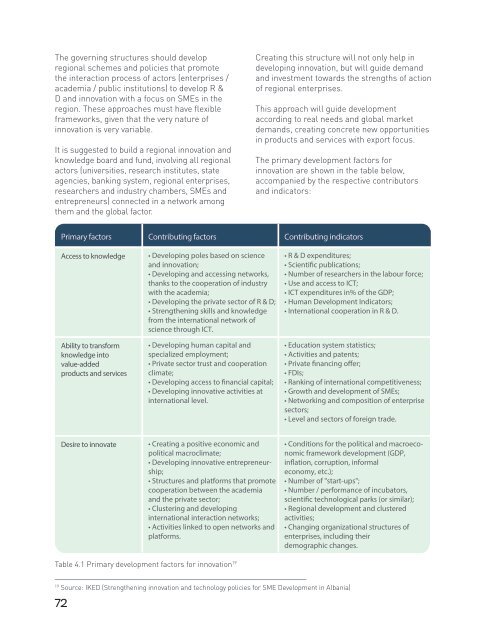Integrated Cross-Sectorial Plan of Tirana-Durres Area
The Albanian Government and the National Spatial Plan have identified the Tiranë-Durrës area, as one of the most important economic areas of the country, and of the Balkan region. To ensure a sustainable territorial and urban development of this area, the Ministry of Urban Development in cooperation with the National Territorial Planning Agency has taken the initiative to draft a Cross-sectoral Integrated Plan for the economic area Tiranë – Durrës. The metropolitan region under study includes territories administered by 5 municipalities: Tiranë, Durrës, Vorë, Shijak, Kamëz.
The Albanian Government and the National Spatial Plan have identified the Tiranë-Durrës area, as one of the most important economic areas of the country, and of the Balkan region. To ensure a sustainable territorial and urban development of this area, the Ministry of Urban Development in cooperation with the National Territorial Planning Agency has taken the initiative to draft a Cross-sectoral Integrated Plan for the economic area Tiranë – Durrës. The metropolitan region under study includes territories administered by 5 municipalities: Tiranë, Durrës, Vorë, Shijak, Kamëz.
You also want an ePaper? Increase the reach of your titles
YUMPU automatically turns print PDFs into web optimized ePapers that Google loves.
The governing structures should develop<br />
regional schemes and policies that promote<br />
the interaction process <strong>of</strong> actors (enterprises /<br />
academia / public institutions) to develop R &<br />
D and innovation with a focus on SMEs in the<br />
region. These approaches must have flexible<br />
frameworks, given that the very nature <strong>of</strong><br />
innovation is very variable.<br />
It is suggested to build a regional innovation and<br />
knowledge board and fund, involving all regional<br />
actors (universities, research institutes, state<br />
agencies, banking system, regional enterprises,<br />
researchers and industry chambers, SMEs and<br />
entrepreneurs) connected in a network among<br />
them and the global factor.<br />
Creating this structure will not only help in<br />
developing innovation, but will guide demand<br />
and investment towards the strengths <strong>of</strong> action<br />
<strong>of</strong> regional enterprises.<br />
This approach will guide development<br />
according to real needs and global market<br />
demands, creating concrete new opportunities<br />
in products and services with export focus.<br />
The primary development factors for<br />
innovation are shown in the table below,<br />
accompanied by the respective contributors<br />
and indicators:<br />
Primary factors Contributing factors Contributing indicators<br />
Access to knowledge<br />
Ability to transform<br />
knowledge into<br />
value-added<br />
products and services<br />
• Developing poles based on science<br />
and innovation;<br />
• Developing and accessing networks,<br />
thanks to the cooperation <strong>of</strong> industry<br />
with the academia;<br />
• Developing the private sector <strong>of</strong> R & D;<br />
• Strengthening skills and knowledge<br />
from the international network <strong>of</strong><br />
science through ICT.<br />
• Developing human capital and<br />
specialized employment;<br />
• Private sector trust and cooperation<br />
climate;<br />
• Developing access to financial capital;<br />
• Developing innovative activities at<br />
international level.<br />
• R & D expenditures;<br />
• Scientific publications;<br />
• Number <strong>of</strong> researchers in the labour force;<br />
• Use and access to ICT;<br />
• ICT expenditures in% <strong>of</strong> the GDP;<br />
• Human Development Indicators;<br />
• International cooperation in R & D.<br />
• Education system statistics;<br />
• Activities and patents;<br />
• Private financing <strong>of</strong>fer;<br />
• FDIs;<br />
• Ranking <strong>of</strong> international competitiveness;<br />
• Growth and development <strong>of</strong> SMEs;<br />
• Networking and composition <strong>of</strong> enterprise<br />
sectors;<br />
• Level and sectors <strong>of</strong> foreign trade.<br />
Desire to innovate<br />
• Creating a positive economic and<br />
political macroclimate;<br />
• Developing innovative entrepreneurship;<br />
• Structures and platforms that promote<br />
cooperation between the academia<br />
and the private sector;<br />
• Clustering and developing<br />
international interaction networks;<br />
• Activities linked to open networks and<br />
platforms.<br />
• Conditions for the political and macroeconomic<br />
framework development (GDP,<br />
inflation, corruption, informal<br />
economy, etc.);<br />
• Number <strong>of</strong> "start-ups";<br />
• Number / performance <strong>of</strong> incubators,<br />
scientific technological parks (or similar);<br />
• Regional development and clustered<br />
activities;<br />
• Changing organizational structures <strong>of</strong><br />
enterprises, including their<br />
demographic changes.<br />
Table 4.1 Primary development factors for innovation 19<br />
19<br />
Source: IKED (Strengthening innovation and technology policies for SME Development in Albania)<br />
72
















